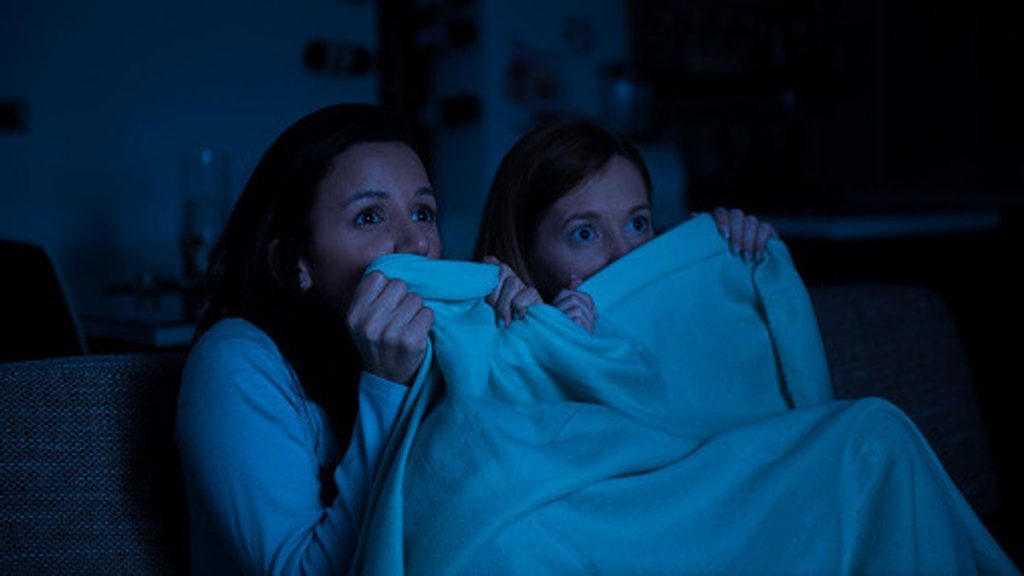
Movies can capture and sustain the attention of their viewers by arousing their curiosity. The uncertain consequences presented in movies are what provoke interest and address the basic curiosity of a viewer’s need for novelty, knowing, and exploration. Interest is an emotion that responds to appeals involving uncertain consequences and has a real action readiness to it. As mainstream films present cognitive challenges that viewers know they can meet, the systematic unfolding of interest as an emotion can lead to absorption.
The psychology of film began with the identification of mechanisms underlying human perception, which eventually led to an understanding of how movies arouse curiosity. By presenting events with uncertain consequences, movies present cognitive challenges that draw in viewers and keep them engaged. Interest in film is driven by the desire to explore and understand complex storylines and characters and to experience new worlds and perspectives.
Affective Responses to Movie Arousing Curiosity
Movies can make people feel a lot of different feelings, from good ones like happiness and excitement to bad ones like fear and sadness. A big part of why movies make people feel these emotions is that they pull them into the story and characters and make them want to know what will happen next. This piece will talk about how films make people feel in ways that make them curious.
Responses to Feelings
Films are a great way to feel things, and they can make people feel loads of different emotions. There are films that make us laugh out loud and films that make us cry so hard we can’t stop. Sometimes, a movie can even leave us speechless or scared and tense. No matter what the answer is, the emotional response is often what makes watching a movie so fun and memorable.
Feelings of happiness, satisfaction, and excitement are all good responses to films. For example, a good comedy can make us feel good and make us laugh for hours after the movie is over. On the other hand, action films may make us feel excited and elated as we watch the main character beat their enemies and get past problems.
Movies can also make you feel bad emotions like sadness, fear, or anger. For example, when we watch people in a tragic movie story deal with tough situations, we might feel sad or sympathetic. On the other hand, horror films might make us scared or uneasy.
We may be interested in a movie for a variety of reasons, including our feelings, which can then affect how we remember and talk about it. For instance, a mystery movie with tense music and story changes can keep people on the edge of their seats, wanting to know more and be excited to see how it all ends.
In addition, different things, like music, photography, or even the story itself, can change how people feel. When the music is just right or a scene is beautifully put together, it can make you feel more, which can add to the overall effect of the movie.

Aesthetic Experience & Appreciation
Movies are one of the few ways we can feel visual enjoyment. The sound and sight of a movie work together to make a moving picture that can engage our feelings, make us feel things, and pique our interest. Aesthetic experience in movies means actively engaging with the work of art. The watcher enjoys the formal aspects of the movie, such as its arrangement, lighting, sound design, and story structure. Personal history, cultural background, and emotional reactions can also change how someone experiences art.
The narrator in mainstream films helps people get lost in the story, which lets them build a world around the characters. People can get lost in a movie’s story, putting aside their doubts for a while and becoming part of the world of the movie. Some people use films as a way to escape reality by taking them to other places and times. The framework of popular films’ stories is meant to help viewers get involved with the story and feel like they know the characters.
Even though we have a good idea of how films make us feel, there is still a lot we don’t know about the psychological aspects of film audiences’ likes. More study could be done on how different moviegoers react to different levels of politeness, complexity, and uncertainty. It could also look at how people’s experiences with films can be different depending on things like their personality or their cultural background. Understanding the psychology factors that affect moviegoers’ choices could help make moviegoing more varied and interesting.
Negative Emotions
People who go to the movies have been known to feel bad feelings like sadness, fear, and rage. When these feelings happen, they can be very strong and upsetting, and they can cause strong physical and mental reactions. Even though it might not make sense, these feelings are what draw people to the show.
Often, bad feelings can make the whole movie experience better. As an example, a scary movie can be exciting and make people look forward to what’s going to happen. In the same way, a movie that shows the darker sides of people can be very upsetting, but it can also be thought-provoking and difficult, which makes people want to understand the material better.
Several psychology models and ideas try to explain the link between having bad feelings and enjoying art. The distancing-embracing model by Menninghaus et al. says that feeling bad emotions can be fun when you’re away from them. This means that people can enjoy how intensely emotional a movie is without being too affected by it or traumatised by it. In this way, bad feelings can be strong and enjoyable at the same time.
Regulation theories about the joys of negative emotions say that the thing that makes them appealing is that they help us keep our feelings in check. People can get rid of their feelings by watching sad or violent films. These films can make people feel things they might not be able to say in real life. Negative feelings can help you get rid of them in a way that is both entertaining and healing.
Researchers have found a link between the feelings people feel in different places as a movie’s story unfolds and world signs of fun and happiness. This means that how people feel during certain parts of a movie can affect how much they enjoy the movie as a whole. An example of this is that a movie that makes people feel things at important times is probably going to do better than one that doesn’t.
Psychology of Curiosity
The psychology of curiosity is an interesting area of study that tries to figure out what makes people curious and where it comes from. People have always wanted to learn new things and discover new things about the world around them. Most people think of curiosity as an innate drive to learn new things and have new adventures. Still, there is a lot of discussion and research going on in psychology and related fields about the ways and methods that make this desire work. This piece will talk about some of the most important study results and theories that have been made to try to figure out what makes people curious.
Wide Range of Measurement Instruments & Apt Labels for Constructs
In the field of audiovisual research, a wide range of measurement instruments have been developed to study how movies arouse curiosity. These instruments vary in their construct of curiosity and the perspective from which they measure it. Self and informant reports of curiosity, as well as ratings of personality, cognitive and emotional appraisal, and directly observed behavior, are some of the constructs that these instruments have studied.
The relevance of these instruments lies in their ability to provide a comprehensive understanding of the different facets that contribute to our curiosity about movies. Self-reports of curiosity, for example, allow researchers to measure the subjective experience of curiosity and its intensity in viewers, while informant reports provide additional insight into the social behavior of viewers and their observed behavior above chance levels. Personality ratings, such as the NEO-PI, can help identify individual differences in curiosity, while cognitive and emotional appraisal models, like the Appraisal Basis Model or the Valence-Arousal Model, have been used to examine how specific features of the film influence our curiosity.
Directly observed behavior has also been utilized to examine exploratory and aggressive behavior across contexts, and how these behaviors are affected by viewer curiosity about a film. Instruments like the California Adult Q-sort or the Riverside Behavioral Q-Sort version 2 have been used to quantify and rate different aspects of observed behavior, such as the frequency and duration of exploratory behavior.
Lawrence Erlbaum’s Relevance to the Topic
If you’re interested in exploring the psychology behind how movies arouse curiosity, then Lawrence Erlbaum is a name you should know. Despite its long-standing reputation as a publisher of books on psychology, education, and communication, Lawrence Erlbaum has also published numerous works related to the psychology of film.
These works cover a wide range of topics, including the impact of movies on emotions and cognition, the use of movies in therapy, and film theory more generally. One of their most notable works is the Handbook of Psychophysiology, which provides a comprehensive overview of the field.
By referencing the works of Lawrence Erlbaum, writers, and researchers can provide a more well-rounded analysis of the psychology behind how movies arouse curiosity. For instance, studies by Lawrence Erlbaum authors have covered the importance of emotional and cognitive responses to films, as well as the role of aesthetic appreciation in generating curiosity.
Measurements & Ratings of Curiosity
To better understand the phenomenon of curiosity about movies, researchers have developed various methods for measuring and rating levels of curiosity. These methods range from self-report measures to observer ratings and have been used to explore the relevance of curiosity as a construct in social behavior, as well as its association with other cognitive and emotional responses to the film. In this section, we will delve into some of the key findings from studies on the measurement and ratings of curiosity about movies.
Different Sources of Measuring & Rating Curiosity
Curiosity is a complex construct that can be challenging to measure and assess, especially in the context of movies. However, several methods can be used to measure and rate curiosity in movies, including self-reported curiosity, observer-reported curiosity, and ratings of curiosity.
Self-reported curiosity is a method in which participants report their curiosity levels after watching a movie, using surveys or questionnaires. This approach provides a subjective measure of curiosity and can be affected by factors such as social desirability bias.
Observer-reported curiosity, on the other hand, involves the ratings of trained observers who can quantify the level of curiosity displayed by the viewers while watching the movie. This approach offers an objective measure of curiosity, but its accuracy can also be impacted by observer bias.
Ratings of curiosity for movies are yet another method of measuring the curiosity aroused by films. In this method, viewers rate their level of curiosity before and after watching a particular film. The difference between the two ratings is taken as a measure of the curiosity evoked by the movie.
The relationship between trait curiosity and response to movies can also be explored. Trait curiosity refers to the disposition of a person to seek novel and challenging experiences. Thus, individuals with higher levels of trait curiosity are more likely to be curious about movies, and their responses can be used as a measure of curiosity.
Besides these methods, several measures can gauge curiosity, such as behavioral measures, physiological measures, and self-report measures. Behavioral measures involve the assessment of exploratory behavior, while physiological measures focus on changes in physiological responses such as skin conductance, heart rate, and pupil dilation.
Different Types of Trait-Curious People
Trait curiosity can be defined as the disposition of a person to seek novel and challenging experiences. Curious individuals can differ in their curiosity levels and the stimuli that arouse their curiosity. Different types of trait-curious people and their responses to curiosity have been explored in various studies.
One study conducted by Christopher J. Ferguson and colleagues (2011) explored how individuals with different levels of openness to experience (a trait related to curiosity) responded to video game violence. The study found that individuals with high openness to experience showed less negative emotional responses to the violence, indicating that they were less affected by the violent content. This suggests that individuals with higher trait curiosity may be more curious about and open to novel and challenging stimuli, such as violent movies.
Another study conducted by Celeste M. North and colleagues (2016) explored the relationship between trait curiosity and the experience of aesthetic appreciation in art. The study found that individuals with higher trait curiosity had a wider range of aesthetic experiences and were more open to appreciating different styles of art. This suggests that trait-curious individuals may be more perceptually open to the different stimuli in movies, such as intriguing narratives, complex characters, and intricate cinematography.
Association Between Curiosity & Movies
Curiosity is a complex construct that has been the subject of extensive research in various fields, including psychology, philosophy, and education. It refers to a variety of affective and cognitive responses that arise from a desire for knowledge, exploration, and novelty. Curiosity is also a significant factor in our experience of movies, as it influences our emotional and cognitive responses to the film’s content. In your interested in movies, we will explore the association between curiosity and movies and how this relationship affects our viewing habits and preferences. The website thisvideorocks will help you to arouse your curiosity more with their wide range of crazy good videos from the internet. From disaster movies to famous footballers, your visual senses will go wild when viewing these amazing online videos!
The Basis for Trait Curiosities in Movies
Curiosity is often seen as a positive trait, one that drives individuals to seek out new experiences and expand their knowledge. In the realm of film, trait curiosity is essential as it allows individuals to engage with the medium in a meaningful way. However, the basis for trait curiosities in movies is not always clear. In this article, we will explore the psychology behind trait curiosities about the film medium and discuss how the experience of the film may shape one’s level of curiosity.
One of the key things that contribute to trait curiosity in movies is the range of emotions that a film can elicit. Expert researchers in the field of psychology of curiosity, Silvia & Berg, explain that an affective response is a basis for trait curiosity. Movie experiences can produce a wide range of emotional responses: from negative emotions such as fear and anxiety to positive emotions such as joy and happiness. Silvia & Berg assert that people find these affective responses intrinsically motivating for searching for information, such as in the context of a movie.
The sheer variety of films available today, ranging from blockbusters to indie films, enhance the curiosity factor. Having access to a wide range of films means that individuals can explore different genres, plots, and styles, each representing a unique aesthetic appreciation. Such experiences, in turn, shape a person’s traits and level of curiosity. The University of Nebraska Press documents in academic research that the experience of the film plays an important role in shaping and developing an individual’s trait of curiosity. Furthermore, curiosity ratings by raters of curiosity might highlight variations in curiosity sources and relevance of curiosity as these are under the influence of an individual’s unique movie history and preferences.
Factors That Fit into How Movies Arouse Curiosity
Several key factors can contribute to how movies arouse curiosity in their audience. One important element is narrative fiction, which allows viewers to immerse themselves in an imaginary world and explore a wide range of scenarios and characters.
Film style and use of technology are also important in evoking interest and stimulating exploration. For example, the use of innovative cinematography techniques and special effects can create a heightened sense of immersion and engagement, which in turn can contribute to the psychological experience of curiosity.
Another important factor is suspense, which can be created through a variety of cinematic techniques such as foreshadowing, ambiguity, and tension-building. Suspense can encourage viewers to stay engaged with the story and anticipate its resolution, further fueling their curiosity.
Emotional engagement is also a key component of how movies arouse curiosity. Emotional experiences such as fear, joy, and sadness can serve to deepen viewers’ investment in the narrative and create an enduring connection between the viewer and the film.
Conclusion
In conclusion, movies have an extraordinary ability to arouse curiosity in viewers. This can be measured and rated through a variety of sources, including affective and emotional responses, cognitive challenges, exploratory behavior, and observed behavior. Studies have shown that the association between curiosity and movies is strong, with films presenting systematic cognitive challenges that cater to viewers’ basic need for novelty and uncertainty.




